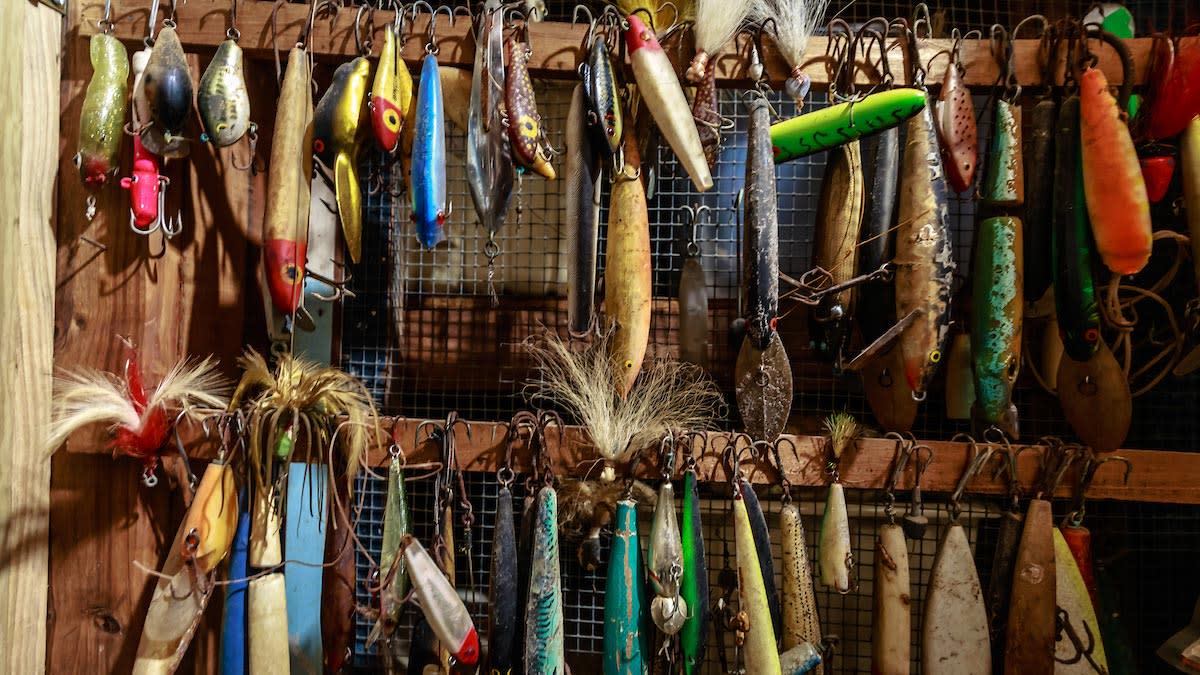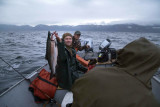
I’ve always loved hometown tackle stores. The kind of places with “Beer, Bait, Ammo” advertised in neon out front. Some of them stick to the basics: hooks, sinkers, bait, and licenses. Others are highly specialized tackle warehouses with unique lures for local waters and up-to-date intel on what’s biting and where. They’re places where you can grab what you need and go, or hang out, talk fishing, and not feel pressured to buy anything. Sadly, I’ve watched many of these establishments go out of business over the last few years.
But the future for small tackle shops isn’t all foreclosure signs and Chapter 11 paperwork confetti funerals. Sure, malls killed small retail in the ’90s, and the internet killed malls in the 2000s, but consumers in the depths of an unboxing bender are now realizing the limitations of online shopping: “You call that a large?” or “This color looked a lot different on my phone.”
Savvy shop owners have moved past shaking their fists at the sky and cursing technology and started realizing the opportunities at hand. The answer lies in small shops doing what they’ve always done: being local, artisanal, niche, and quirky. Essentially, mom-and-pop tackle shops were hipster before hipster was a thing.
I reached out to a few fishing shops that are growing and thriving in order to better understand what makes these institutions successful.
Full Stringer Bait and Tackle | Longville, Minnesota
When I finally got John Ferris on the phone, I could barely hear him over the hum of bait tanks in the background. This time of year, Ferris is busy sourcing bait from over 30 fish trappers around north-central Minnesota for his business, Full Stringer Bait and Tackle. John explained that the walleye fishing had been particularly good, and he’d been running around trying to find redtail chub minnows, a favorite of local walleye anglers.
Fishing intel serves as the stock-in-trade of any independent tackle store, but bait still pays the bills. At Full Stringer, they carry an impressive selection: crappie minnows, fatheads, five sizes of sucker minnows, shiners, rainbow minnows, redtail chubs, various sizes of night crawlers and leeches, and more.
“A lot of people comment that they don’t see that variety in other shops,” Ferris said. “The shiners, rainbows, and redtails are hard to get, and if you can keep them in stock consistently, hardcore walleye guys will drive for hours to get some.”
Ferris has worked in tackle shops since he was 14 years old. He and his wife, Lacey, bought and renovated Full Stringer four years ago. Ferris lamented that good bait is becoming more difficult to find. They sell mostly wild-caught minnows from small local ponds, but recent hard winter freezes have killed off many of the populations trappers relied on for years.
Despite these difficulties, John and Lacey’s hard work (sometimes 18 hours a day) has paid off. In a recent public poll, they were voted the No. 1 tackle shop in Minnesota—high praise to be sure.
Ferris told me they’ve found social media to be an asset, even for their decidedly old-school business.
“We have a lot of walleye tournaments this time of year and just the other day I got a fresh batch of redtails,” Ferris said. “We put the word out on social media and people started coming in. It’s also a great way for visiting anglers to find our business.”
Ferris credits their success to the renovations they’ve done to the shop as well as their attention to detail.
“I’ve seen some shops that have inconsistent hours because things get slow and the owner decides to go fishing. They leave and have customers find a locked door. Those customers don’t come back. We stay consistent on hours and keep our shelves stocked.”
Coop’s Bait and Tackle | Edgartown, Massachusetts
You could drive past Coop’s Bait & Tackle on the small island of Martha’s Vineyard without ever knowing it’s there. It shares a driveway with a lumberyard and storefront advertising is minimal. If, however, you make the effort to seek them out you’ll find everything from tuna outfits to pegboards filled with surf casting gear. There isn’t an inch of wasted space.
When I called Cooper Gilkes, he was in the midst of the storied Martha’s Vineyard Bluefish and Striper Derby. Running from mid-September to mid-October, it’s been the obsession of regional anglers for nearly 75 years. Gilkes only had a short time to talk, so I cut to the chase and asked how he has managed to run a successful, family-owned tackle shop for nearly 40 years.
“Our slogan is, ‘Where Fishermen Gather,’ and it’s that connection with the customer that’s kept us going,” he told me. “We have knowledge of the island and do our best to get people on fish because we know if they catch fish, they’re gonna come back. If you treat people fair and be congenial with them, it pays off.”
Coop’s doesn’t do web sales and I asked if he thought the internet has helped or hurt his business.
“I don’t want to complain about the internet,” he said, “but it hasn’t helped. I can’t tell you how many times people come in with reels from Amazon and want us to spool it for them.”
Despite the competition, Gilkes remains optimistic.
“Some people get it and understand we offer customer service and local knowledge—others don’t. I’ve had some really good friends go out of business. It’s tough. Thirteen shops have closed in the last four or five years between my place and Boston. The internet probably hurt some of them, but it’s a combination of a lot of things.”
Another way Coop’s ensures survival is by teaching the next generation of anglers how to fish.
“We do a lot of work getting kids into fishing,” Gilkes said. “They’re the future for both fishing and our business. If we can keep people fishing and treat them right, our shop will continue doing well.”
Fly Fish Food | Orem, Utah
Curtis Fry and Clark “Cheech” Pierce co-own a fly shop aptly name Fly Fish Food. They have a different perspective than many other shop owners about the value of the internet. In fact, their shop likely wouldn’t exist without it. Three years before they built their brick-and-mortar fly shop, Fly Fish Food started as an online store specializing in fly tying materials. The successfully fostered an online community of hardcore fly tiers that eventually led to the launch of their retail location.
“The internet is the best thing that’s happened to our business,” Pierce explained. “As a business owner if you don’t adapt to how consumers shop, then you’re going to struggle. We’ve embraced it and it’s been huge for us.”
Fly Fish Food specializes in fly tying materials, and that specialization is key to their success. They might not be able to compete with outdoor megastores when it comes to selling lawn chairs, coolers, and clothing, but they can damn sure compete when it comes to a niche space like fly tying.
“Besides the usual stuff like rods, reels, and waders, we have 3,000 square feet of just fly tying materials,” Pierce told me. “People walk in the door and go, ‘Holy crap, I’ve never seen so much tying stuff!’”
With a selection of tying materials rivaling any on the planet, Fly Fish Food has become an attraction in and of itself, despite not having a world-famous fishery nearby.
“We try to be the local fly shop for people in areas that don’t have a shop. We might not have the Madison or the South Fork of the Snake in our backyard, but we offer customer service and expertise not found elsewhere.”
Fry and Pierce have managed to take the high level of customer service traditionally associated with local fly shops and expanded it to an online space with their library of instructional videos and engaging social media content. People can learn about everything from basic fly tying skills to the minutiae of different fly tying scissors.
“We try to be accessible, whether that’s through our online store, email, phone calls, or our retail space. We like to think we run a service shop that just happens to sell fly fishing gear.”
Small Stores in a Big Box Pond
From my conversations with Gilkes, Pierce, and Ferris, I learned several things. First and foremost, customer service and knowledge are key. That might seem obvious, but after talking to them I realized when they say “customer service” they’re talking about more than return policies. It’s more about creating a “vibe” to the shop. These shops are like social clubs where you get to talk to likeminded people about a shared passion. They know your name when you walk in the door and you feel like you’re a part of the team.
Benjamin Bulis, president and CEO of the American Fly Fishing Trade Association, confirmed this observation.
“From what I’ve heard, I’d estimate around 120 fly shops have closed across the country since the early 2000s,” he told me. “The ones that are doing well are interested in more than retail transactions. They host fly tying nights, put on classes that introduce beginners to fly fishing, and generally create a sense of community.”
When it comes to family-run tackle shops, number are hard to come by, but according to the American Sport Fishing Association, angler participation in the U.S. has increased 11% since 2011. More people fishing can’t be a bad thing for shops like Full Stringer, Coop’s, and Fly Fish Food.
When it comes to small fly and tackle shops there isn’t a single formula for success, and success is a relative term. For these shops, it’s not about beating the big guys and taking over the world. It’s about enjoying the company of their customers and making sure their families are taken care of. It’s about finding a need in the market that big stores can’t fill or don’t bother to address.
What you remember about places like these is the people who run them. Mom-and-pop stores have been part of the American landscape since the country was founded. The next time you need some fishing gear, drive the extra mile, spend the extra dollar, and get to know the person behind the counter. It will make you a better angler.
Feature image via Bryan Gregson.






